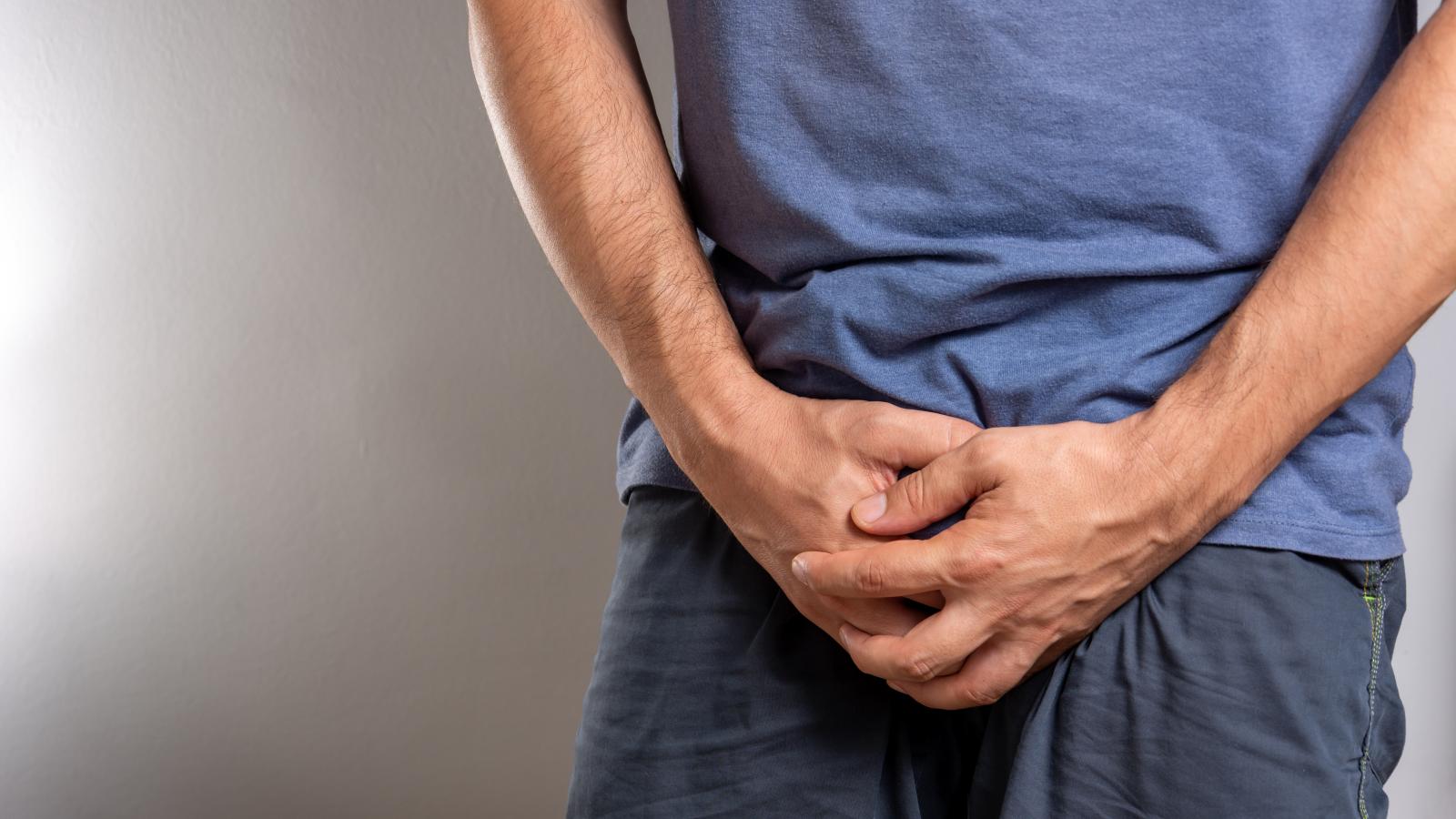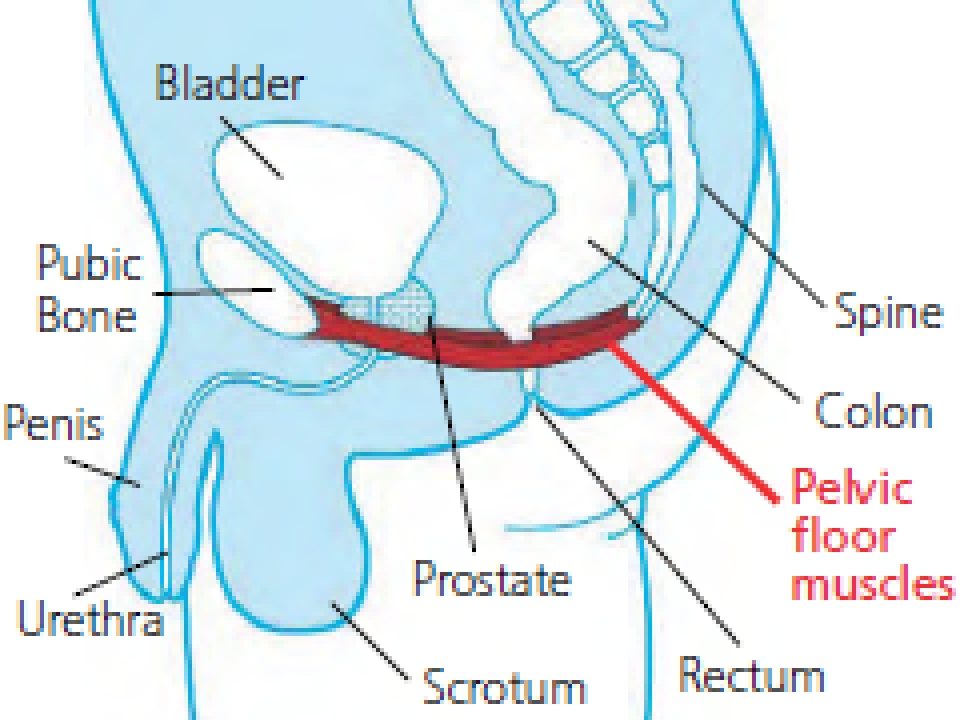Pelvic floor exercises

Pelvic floor exercises can help to strengthen the muscles around your bladder and in the pelvic floor and may improve your bladder control. Studies have also shown that some men with erectile dysfunction (impotence) have better function after carrying out pelvic floor exercises regularly.
Getting advice
You can ask a healthcare professional, such as a physiotherapist or specialist nurse about how to do these exercises correctly. You could also ask your GP or local health centre if they can put you in touch with a continence adviser, who is a specialist in dealing with urinary problems.

Which muscles should I exercise?
The pelvic floor is a hammock of muscles that supports the bowel and bladder in your abdomen. They also control the emptying of your bladder and bowel.
- To find these muscles, start by sitting or lying comfortably with the muscles of your thighs, buttocks and abdomen relaxed.
- Draw in your pelvic floor muscles as you would to stop the flow of urine and shorten your penis. You should have a sense of “lift” each time you squeeze your pelvic floor muscles.
- You can check that you have found the right muscles. When you go to the toilet to empty your bladder, try stopping and starting your flow while passing urine. You should then feel a definite lift and squeeze action of your pelvic floor muscles. (This is a test only. Doing it often may interfere with how the bladder works normally.)
How should I do pelvic floor exercises?
Now that you have found the pelvic floor muscles you can begin to exercise them. Start the exercises lying down, and then move to sitting, then standing and walking while doing your daily activities. You can do them when watching TV, brushing your teeth or sitting at your desk at work. If you want to improve the strength and bulk of the muscle, you really need to make an effort to keep up the exercises.
- Squeeze and draw in the muscles around your back passage and water pipe (urethra), lifting up the muscles inside. Don’t hold your breath! Try not to tighten your buttocks or thighs.
- Do a test squeeze – count how long you can hold a strong squeeze before the muscles start to tire and ‘flicker’. This will be the measure of your baseline hold, to decide how long you hold the squeeze for when you do your exercises. You may find you can hold for between 5 and 10 seconds, everyone is different.
- Relax and let all the muscles go loose. Wait 10 seconds and repeat the squeeze or ‘lift’ – hold for as many seconds as you managed on your test squeeze.
- Repeat this up to a limit of 8–10 squeezes.
- Follow this by doing 5–10 short, strong squeezes quickly one after another.
- Aim to slowly increase the number of seconds you hold the contraction to 10 seconds over the coming weeks.
- If your muscles gets tired and ‘flicker’ or you cannot hold the contraction strongly, reduce the length of squeeze and number of times you repeat the exercise to a level you can manage. Build this up slowly.
- Do the whole exercise routine 2 to 3 times a day.
Regular training using these exercises will build up your muscles. It will take some weeks to notice an improvement. When you have recovered control, you should continue doing the exercises twice a day for life.
‘The knack’
‘The knack’ is a technique to help to reduce leakage. ‘The knack’ involves squeezing your pelvic floor muscles before you cough, sneeze or laugh or before or during other activities that can make leakage worse.
You should squeeze your pelvic floor muscles before and during strenuous activities to help prevent leakage of urine.
You should gently squeeze the muscles at half your strongest squeeze when you are walking. This encourages the muscles to work during activity.
Most people find that urinary incontinence is worse towards the end of the day. This exercise helps to reduce muscle fatigue (tiredness).
You can use a strong pelvic floor squeeze to reduce a sudden urge to empty the bladder. Over time this may help to reduce how often you need to pass urine. After you have passed urine, squeeze your pelvic floor muscles strongly to avoid after dribble. If dribbling persists, massaging or ‘milking’ the water pipe (urethra) behind the scrotum can help to remove the last few drops that often dribble out a minute or so after you have passed urine.
For more information
Phone
1800 200 700



